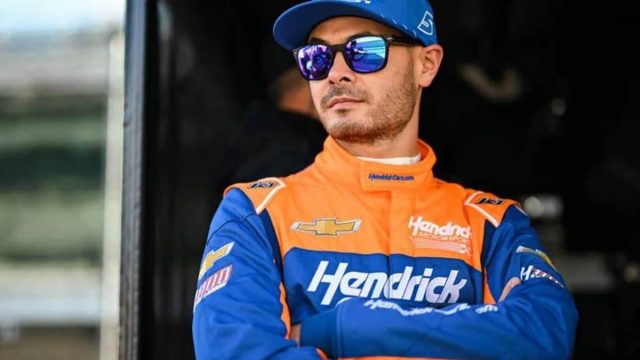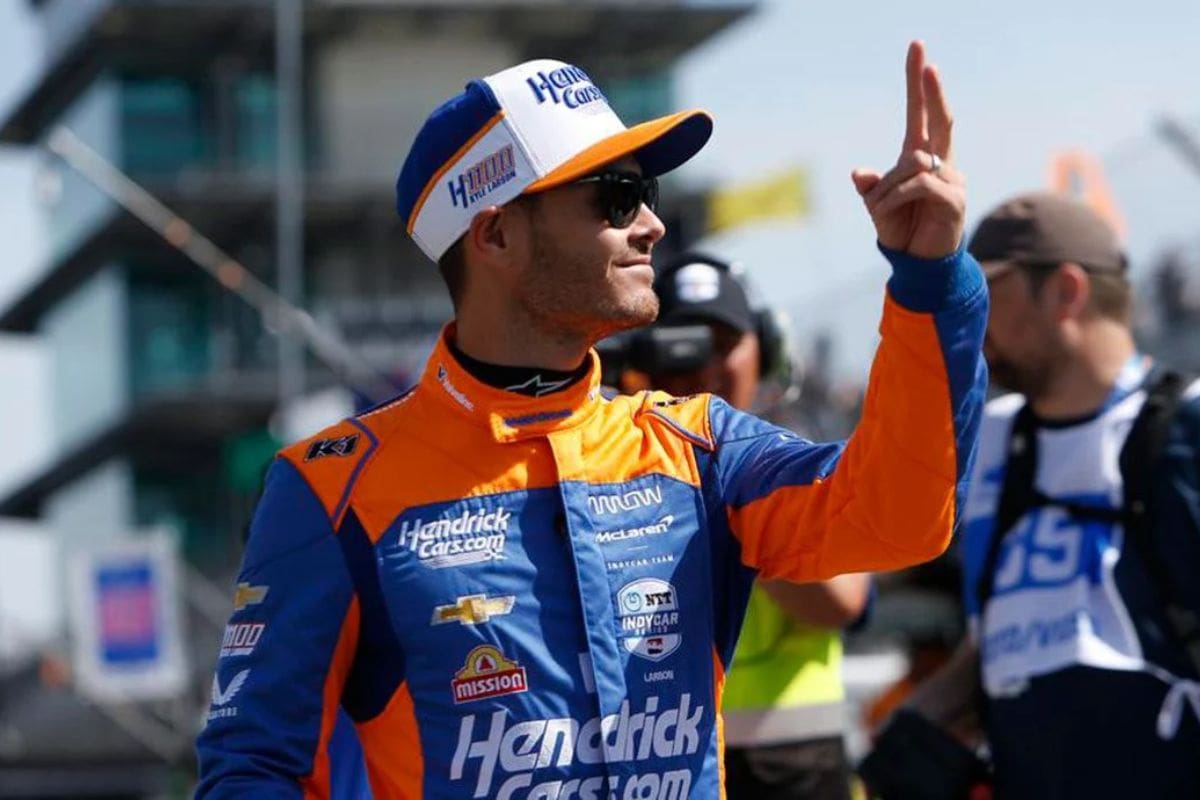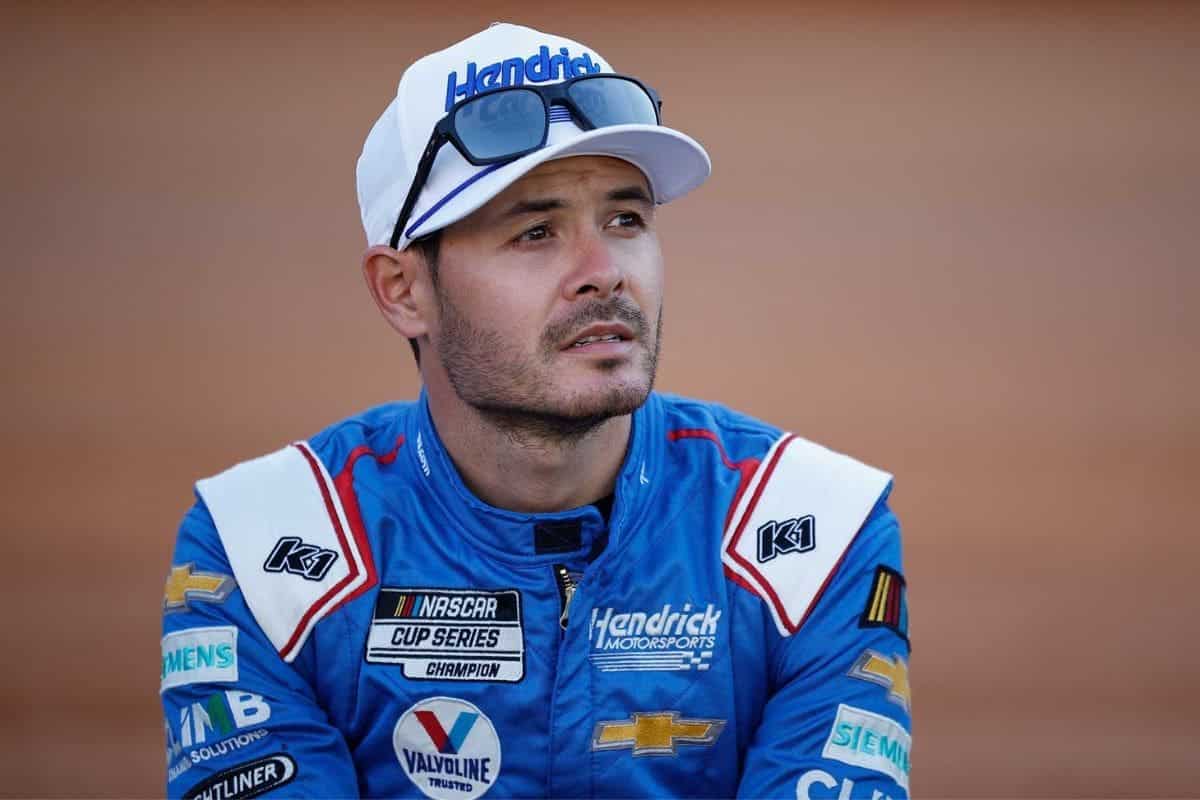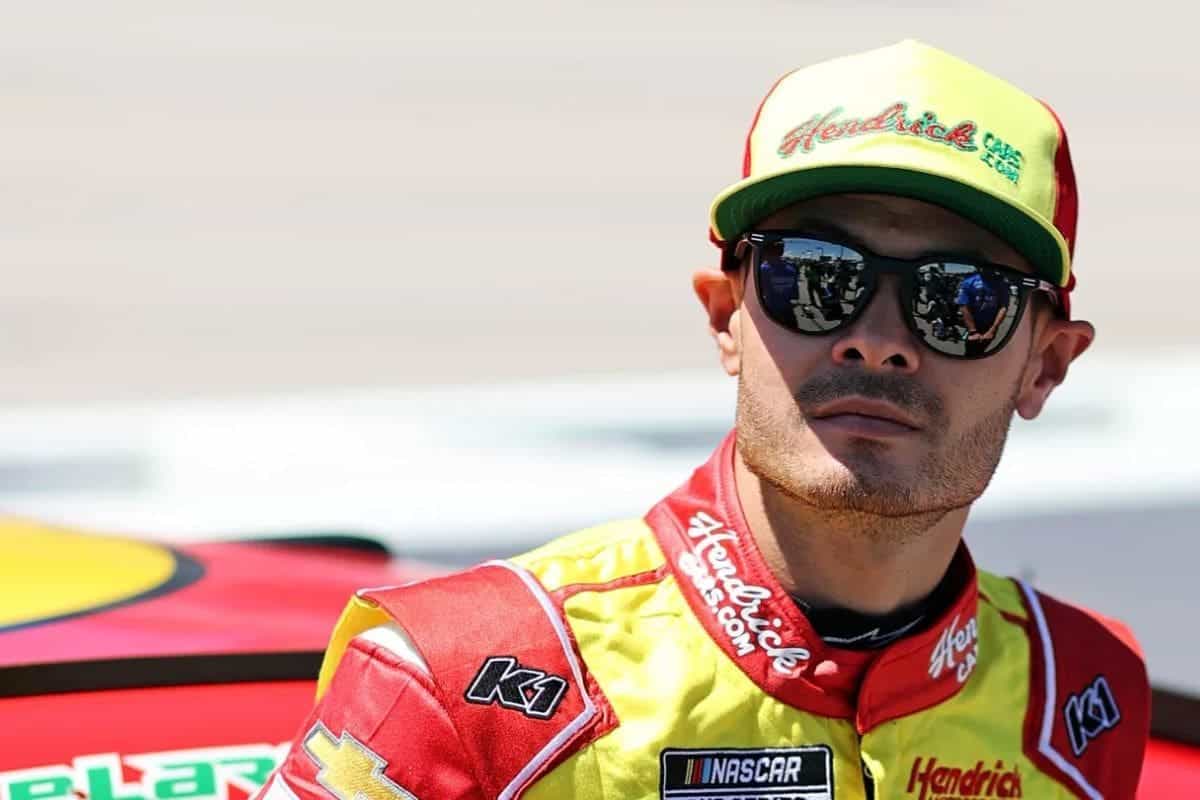Kyle Larson Highlights Issues in NASCAR: Kyle Larson‘s recent critique of Iowa Speedway’s repaving project brings to the forefront significant issues affecting NASCAR tracks undergoing similar transformations. Highlighting inconsistent grip levels, uneven tire wear, and overtaking challenges, Larson’s insights resonate with peers like Christopher Bell, who share similar concerns. Brad Keselowski‘s optimism about future track adjustments aligning with Next-Gen car designs contrasts sharply with Larson’s cautionary stance. This comparison raises fundamental questions about the balance between track modifications and race quality, prompting a deeper examination of how such changes impact the racing experience as a whole.
Key Highlights
- Kyle Larson criticized the inconsistent grip levels caused by the partial resurfacing of Iowa Speedway.
- Larson highlighted uneven tire wear as a significant issue following the track’s revamp.
- He expressed concerns about the impact of the repave on vehicle balance and feedback.
- Larson noted the increased difficulty in overtaking due to the new track conditions.
- Despite Larson’s concerns, Brad Keselowski remained optimistic about the track adjustments aligning with Next-Gen car design.
NASCAR’s Track Repaving Controversy
The controversy surrounding NASCAR’s track repaving practices has intensified, particularly as drivers like Denny Hamlin have openly criticized the decision-making process and its potential impact on race performance and safety. Hamlin’s recent comments highlight a growing dissatisfaction within the driving community, pointing out specific instances where repaving has led to less than ideal outcomes. For instance, his criticism of the repaving actions at Sonoma Raceway reflects broader concerns about how such decisions might affect racing dynamics and driver safety.
Hamlin’s apprehensions are not unfounded. The repaving at Sonoma Raceway has been cited as leading to faulty racing actions, which have not only changed the competitive balance but also introduced new safety risks. Additionally, Hamlin’s gloomy prediction for North Wilkesboro Speedway materialized, lending credence to his assertions about the potential pitfalls of hasty or ill-considered repaving projects. This has put additional strain on NASCAR’s higher-ups and track management entities like Speedway Motorsports to tread carefully when planning and executing track resurfacing.
Marcus Smith, CEO of Speedway Motorsports, has been at the center of these debates, engaging in a public exchange with Hamlin. Smith’s role adds complexity, as his decisions directly influence track conditions that drivers like Hamlin must navigate. The tension between Smith and Hamlin shows a broader conflict between administrative bodies and drivers, each with vested interests in the outcomes of repaving projects.
Before the first Cup race at Iowa Speedway, NASCAR invited some drivers to test the track. Kyle Larson was one of them and had the chance to try out the updated track. However, like other drivers, he gave a negative review.
Kyle Larson’s Critique of the Repaved Iowa Speedway
Kyle Larson’s evaluation of the newly repaved Iowa Speedway reveals significant concerns about the partial resurfacing approach and its implications for race quality and driver safety. In a recent test session, Larson’s firsthand experience on the 0.875-mile track highlighted several critical issues stemming from the decision to only partially repave all four turns. This approach, Larson argues, may lead to inconsistent grip levels across the track, potentially compromising the competitive integrity of races and the safety of drivers. Ryan Blaney shared his opinion by posting a funny horse meme, due to which he was called the ‘memelord.
- Inconsistent Grip: The partial repaving results in varying grip levels, which can create unpredictable handling characteristics for drivers, leading to increased risk of accidents.
- Uneven Wear: The contrast of new and old pavement is likely to cause uneven tire wear, impacting race strategies and potentially leading to unexpected tire failures.
- Surface Change: The shift between old and new surfaces can be abrupt, unsettling the balance of vehicles, especially at high speeds, thereby increasing the likelihood of loss of control.
- Driver Feedback: The inconsistency in track conditions may make it difficult for drivers to provide precise feedback to their teams, complicating setup adjustments and general race preparation.
Insights from Kyle Larson and Fellow Drivers
Considering the wider range of driver perspectives, Larson’s critique gains additional complexity when considering insights from fellow drivers such as Christopher Bell and Brad Keselowski.
“With repaves, usually it’s got a lot of grip, so you see them taking the shortest distance…Once we get more cars here…there were only three of us, right, it’s been hard to move it up…Once we get the 40 cars here…I think it will move it up to more lanes. But it will still be difficult to pass when the pace is so fast. But we’ll see when we’ll get to race there.” – (larson)
Bell concurs with Larson, particularly on the challenge of overtaking post-repave, stating, ‘it’s going to be more difficult to pass.’ This shared sentiment emphasizes a significant concern for driver strategy and race dynamics. Larson and Bell’s observations suggest that while the repaving might improve grip, it could unintentionally restrict the competitive edge by limiting passing opportunities, an important aspect of racing that fans and drivers both cherish.
In contrast to these views, Brad Keselowski, the inaugural winner at Iowa Speedway, offers a more optimistic perspective. He believes addressing the bumps in turns 1 and 2 could align with the Next-Gen car’s design, potentially alleviating some of the issues raised. Keselowski’s confidence in the track adjustments to cater to the technological advancements of the Next-Gen cars provides a counterbalance to Larson and Bell’s skepticism. His stance reflects an appreciation for the practical aspects of the revamp, focusing on specific areas that could enrich the racing experience.
UDPB: @KyleLarsonRacin answered questions after the Gooyear tire test @ @iowaspeedway.
Here are his thoughts on the repave, running another Indy 500, what he's heard of a potential waiver to compete in the NASCAR Playoffs, and if he'll race the @knoxvilleraces Nationals in Aug. pic.twitter.com/PhdQPTTl72
— Always Race Day (@AlwaysRaceDay) May 29, 2024
Despite these differing views, Larson’s additional comment that the track remains bumpy in certain sections post-rework cannot be overlooked. This observation is vital as it highlights that while some improvements have been made, the track’s overall condition still poses challenges.
“There were no bumps wherever the new pavement is. But the frontstretches were really bumpy. And a lot of the braking zone into 1 is new order pavements so it’s still really really bumpy. So yeah, there’s still going to be a lot of mistakes made in turn 1, I think, because of the bumps on entry. But once you get to the fresh pave, it’s pretty simple.” – (larson)
Larson’s Dedication to NASCAR
Displaying unwavering dedication to NASCAR, Larson made it a priority to attend a vital tire test over participating in a lucrative High Limit Racing event. This decision highlights Larson’s steadfast commitment to his primary racing series, even in the face of personal and financial sacrifice.
The tire test, held at an uncharted track for the Cup Series, presented a critical opportunity for Larson and his team to gather valuable data and insights, necessary for competitive advantage.
Tuesday night’s Kubota High Limit Racing Midweek Money Series race offered a grand prize. A strong group of 42 High Limit Racing Sprint Car drivers were ready to compete for the $20,000 top prize, but Kyle Larson chose not to join them.
“Grandview is a great track for me and I really love running there. I love racing as much as I can, but when your crew chief tells you, ‘Hey, I signed you up for a tire test at a track we’ve never been to before in the Cup Series,’ I need to be there.” – (larson)
- Prioritization of Team Goals: Despite his affection for Grandview Speedway and the financial allure of the High Limit Racing event, Larson placed the needs of his NASCAR team above personal interests.
- Strategic Focus: Attending the tire test allowed Larson to gain firsthand experience and feedback on track conditions, which is crucial for performance optimization in future races.
- Professional Responsibility: When his crew chief emphasized the importance of the tire test, Larson’s response was immediate and unequivocal, demonstrating his respect for his team’s strategic planning.
- Career Commitment: This choice highlights Larson’s broader commitment to excelling in NASCAR, showing a deep understanding of the long-term benefits over short-term gains.
Larson’s Commitment to Hendrick Motorsports
Building on his steadfast dedication to NASCAR, Larson’s commitment to Hendrick Motorsports is exemplified through his strong pursuit of excellence and his strategic alignment with the team’s long-term objectives. This alignment is not just a matter of professional obligation but a mutually beneficial relationship that has lifted Larson’s career and Hendrick Motorsports’ competitive edge.
Larson’s focus on bringing glory to Hendrick Motorsports is evident in his thorough approach to each race. His preparation extends beyond physical readiness to include a detailed analysis of track conditions, team dynamics, and competitor strategies. This thorough preparation highlights his understanding that success in NASCAR is a multidimensional endeavor requiring both individual skills and collaborative synergy.
His alignment with Hendrick Motorsports’ long-term goals is also evident in his mentorship role within the team. By sharing insights gained from his extensive racing experience, Larson plays a significant part in fostering a culture of continuous improvement and excellence. This mentorship not only boosts the performance of his teammates but also ensures the collective progress of Hendrick Motorsports.
News in Brief: Kyle Larson Highlights Issues in NASCAR
The recent critique by Kyle Larson regarding the repaved Iowa Speedway highlights significant challenges in NASCAR’s track resurfacing projects. Issues such as inconsistent grip levels, uneven tire wear, and overtaking difficulties are prominent concerns among drivers, including Christopher Bell.
Despite Brad Keselowski’s optimism about future adjustments, Larson’s insights emphasize the importance of addressing these issues to improve race quality. This critique reflects a broader need for NASCAR to prioritize the racing experience in track renovations to maintain competitive integrity and driver satisfaction.
Our Reader’s Queries
Q. Is Kyle Larson a NASCAR driver?
A. Following the Indy 500, Larson had a tight schedule ahead. He was set to be swiftly transported to Charlotte Motor Speedway, aiming to arrive in time for the conclusion of the Coca-Cola 600 in the NASCAR Cup Series.
Q. How much did Kyle Larson make with NASCAR?
A. Larson’s annual earnings behind the wheel for Hendrick Motorsports in the NASCAR Cup Series hover around $10 million. His affiliation with Hendrick began with his inaugural contract signing in 2021.
ALSO READ: Kyle Larson’s Waiver Out Powers SHR closing: Fans Divided



